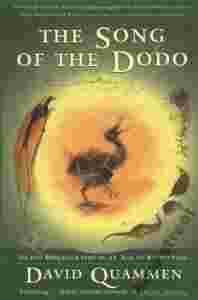|
Thirty years ago, two young biologists named Robert
MacArthur and Edward O. Wilson triggered a far-reaching
scientific revolution. In a book titled The Theory of
Island Biogeography, they presented a new view of a
little-understood matter: the geographical patterns in
which animal and plant species occur. Why do marsupials
exist in Australia and South America, but not in Africa?
Why do tigers exist in Asia, but not in New Guinea?
Influenced by MacArthur and Wilson's book, an entire
generation of ecologists has recognized that island
biogeography - the study of the distribution of species
on islands and islandlike patches of landscape - yields
important insights into the origin and extinction of
species everywhere. The new mode of thought focuses
particularly on a single question: Why have island
ecosystems always suffered such high rates of
extinction? In our own age, with all the world's
landscapes, from Tasmania to the Amazon to Yellowstone,
now being carved into islandlike fragments by human
activity, the implications of island biogeography are
more urgent than ever. Until now, this scientific
revolution has remained unknown to the general public.
But over the past eight years, David Quammen has
followed its threads on a globe-circling journey of
discovery. In Madagascar, he has considered the meaning
of tenrecs, a group of strange, prickly mammals native
to that island. On the island of Guam, he has confronted
a pestilential explosion of snakes and spiders. In these
and other places, he has prowled through wild terrain
with extraordinary scientists who study unusual beasts.
The result is The Song of the Dodo, a book filled with
landscape, wonder, and ideas. Besides being a
grandoutdoor adventure, it is, above all, a wake-up call
to the age of extinctions. |
|

